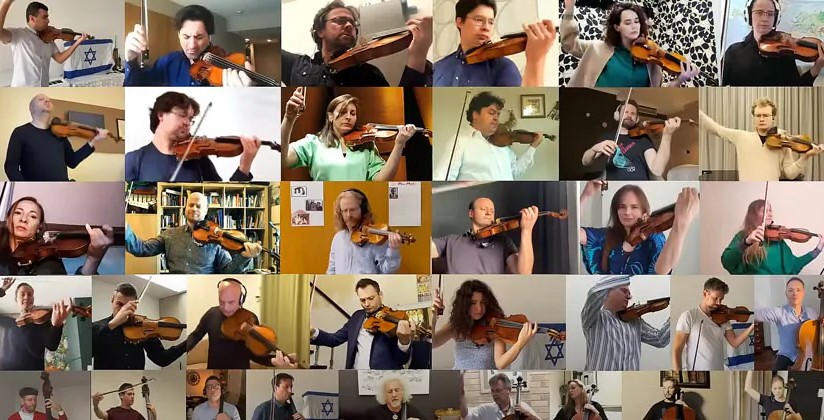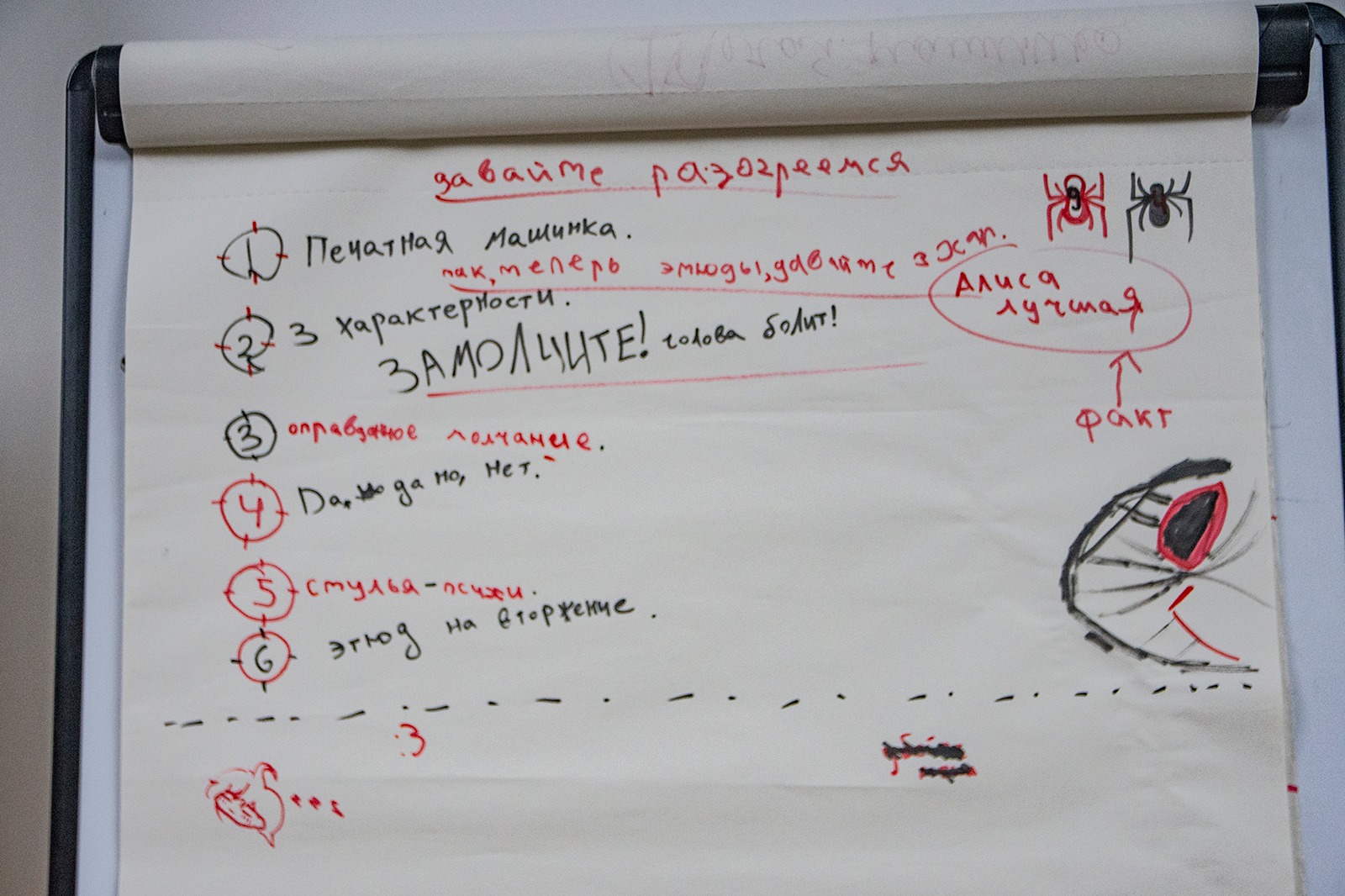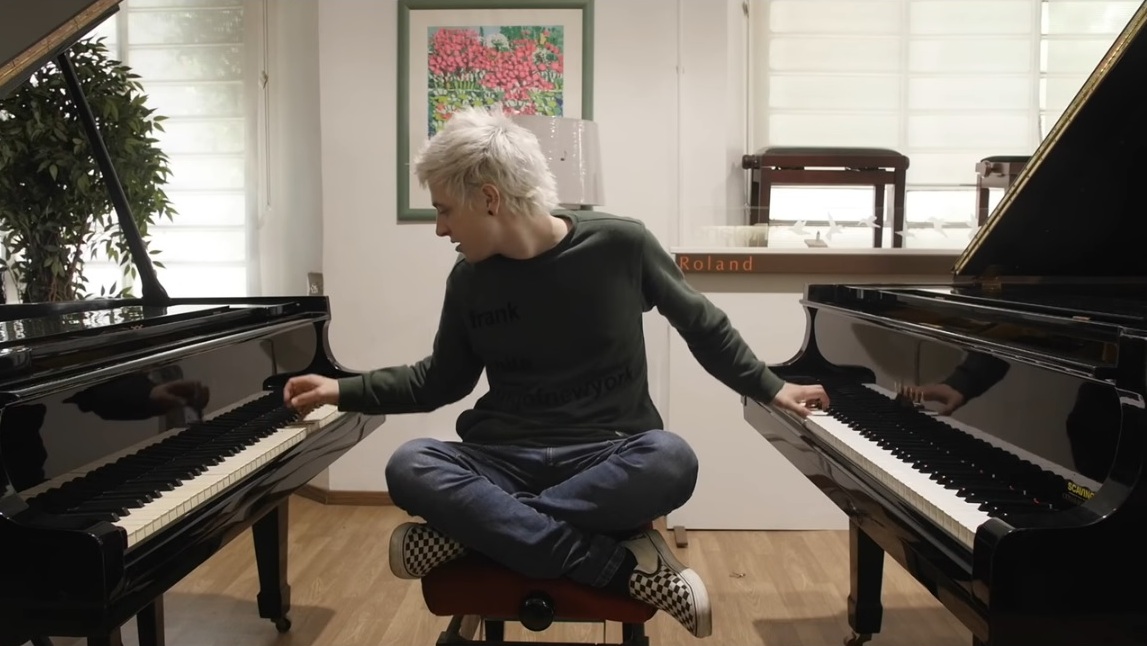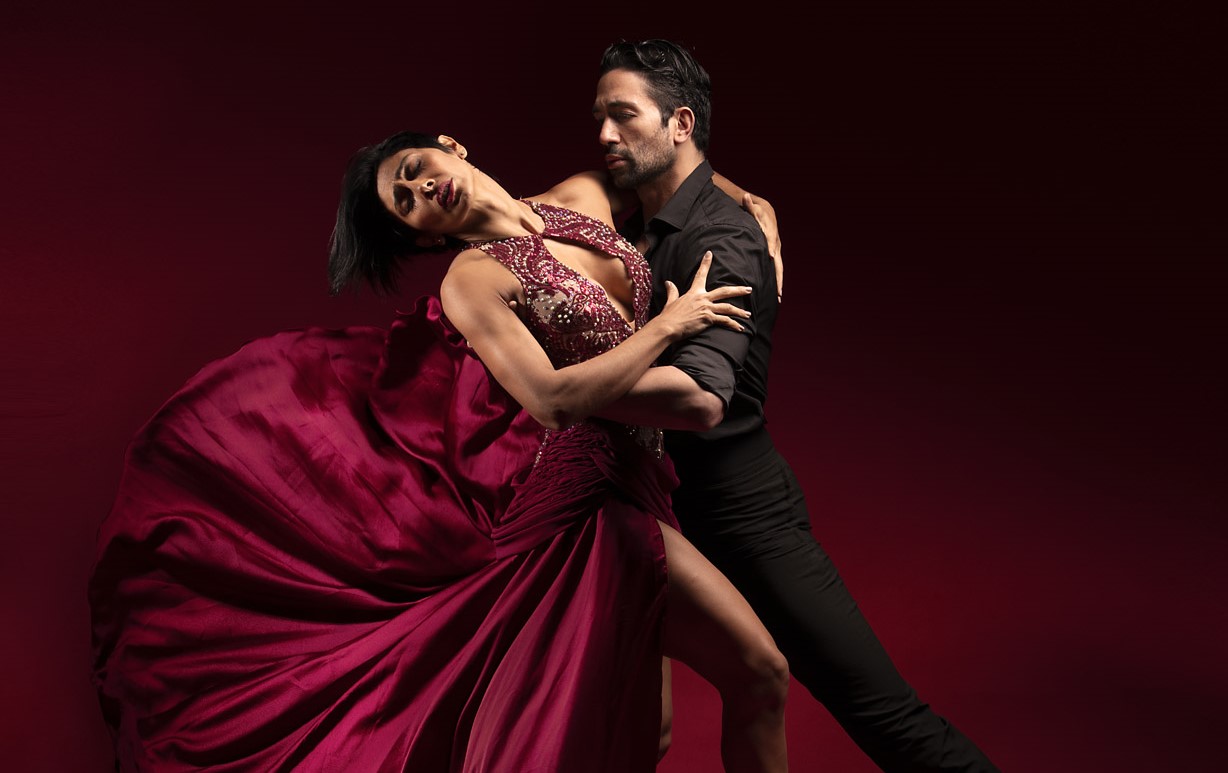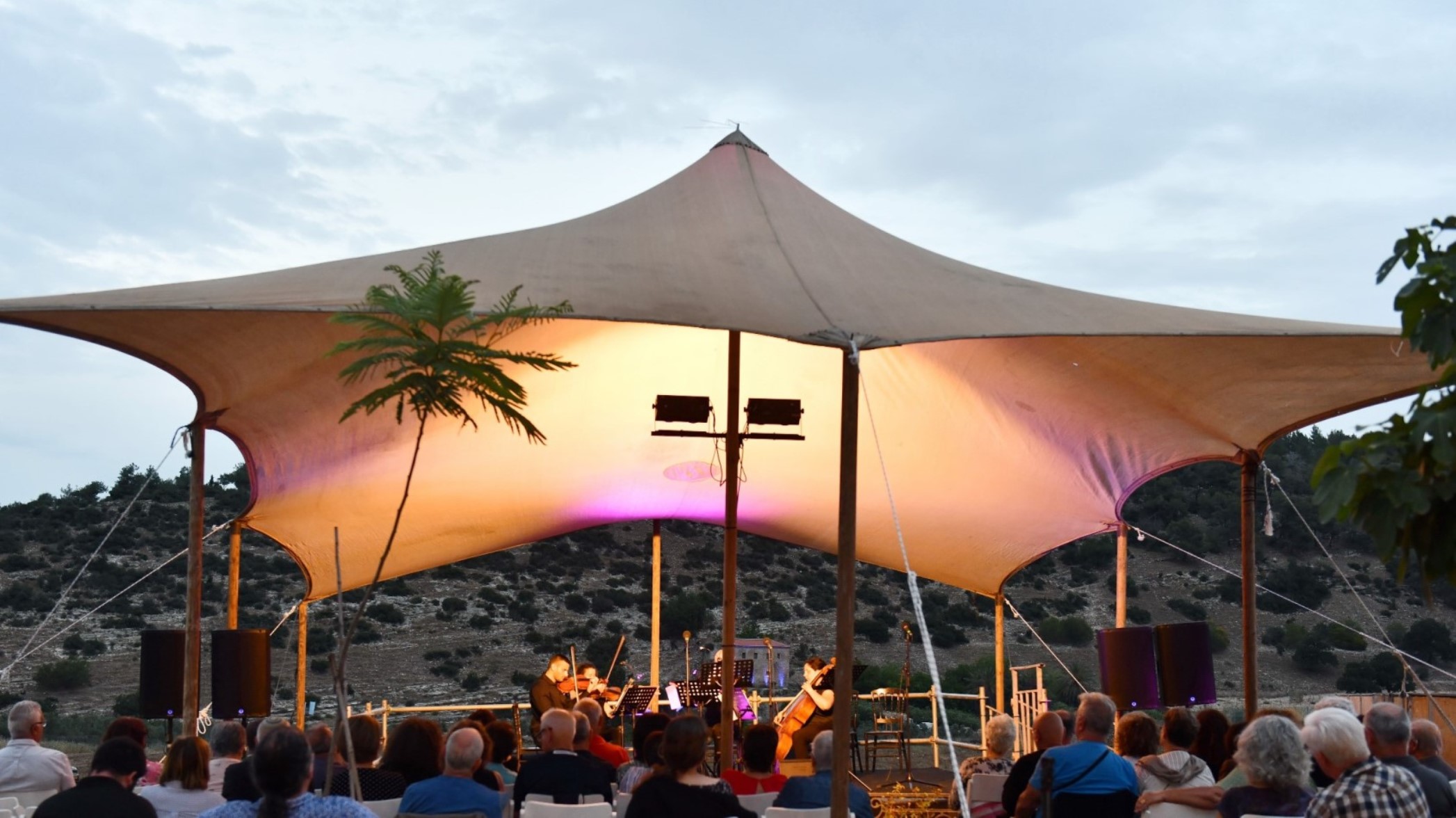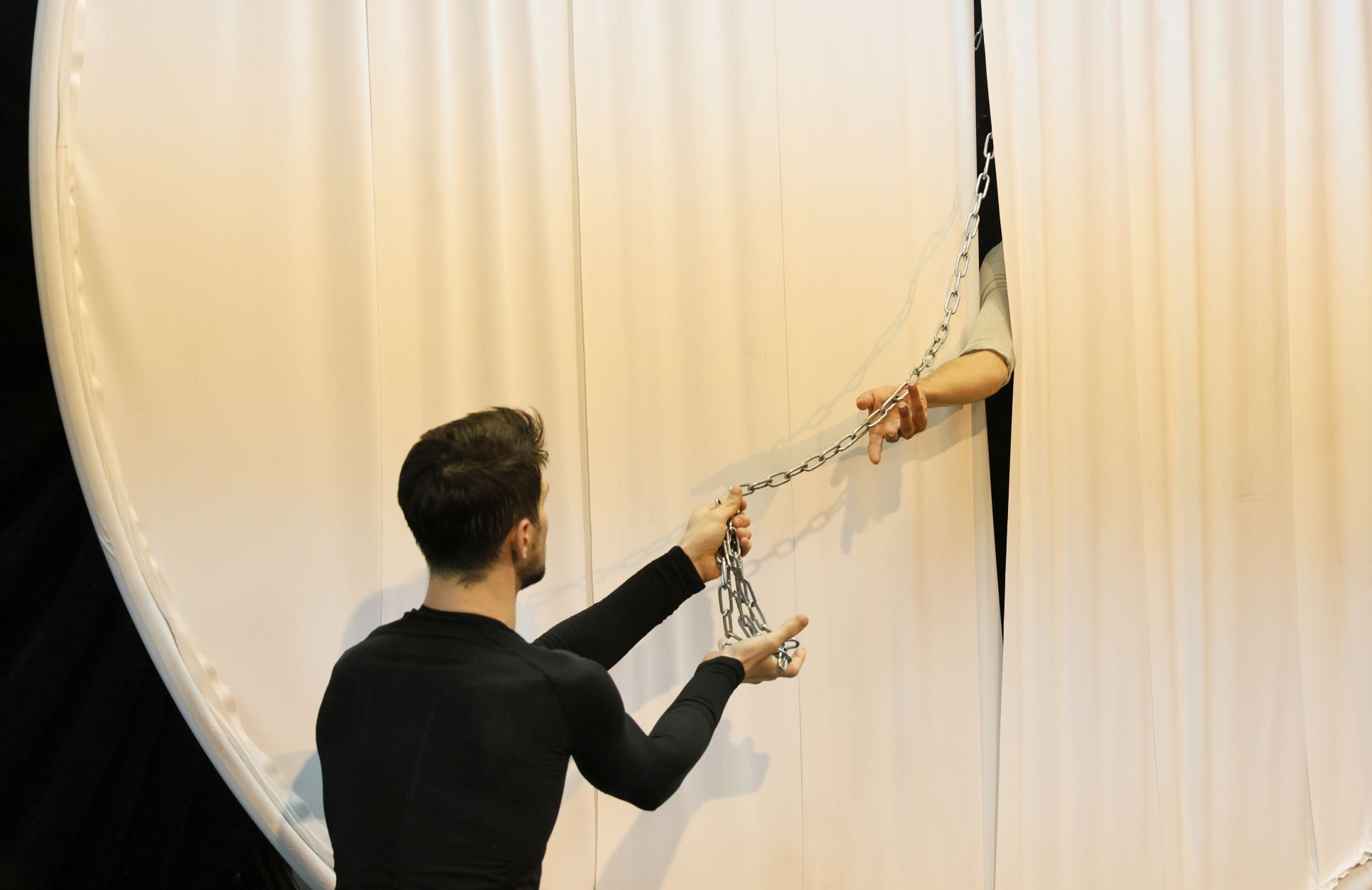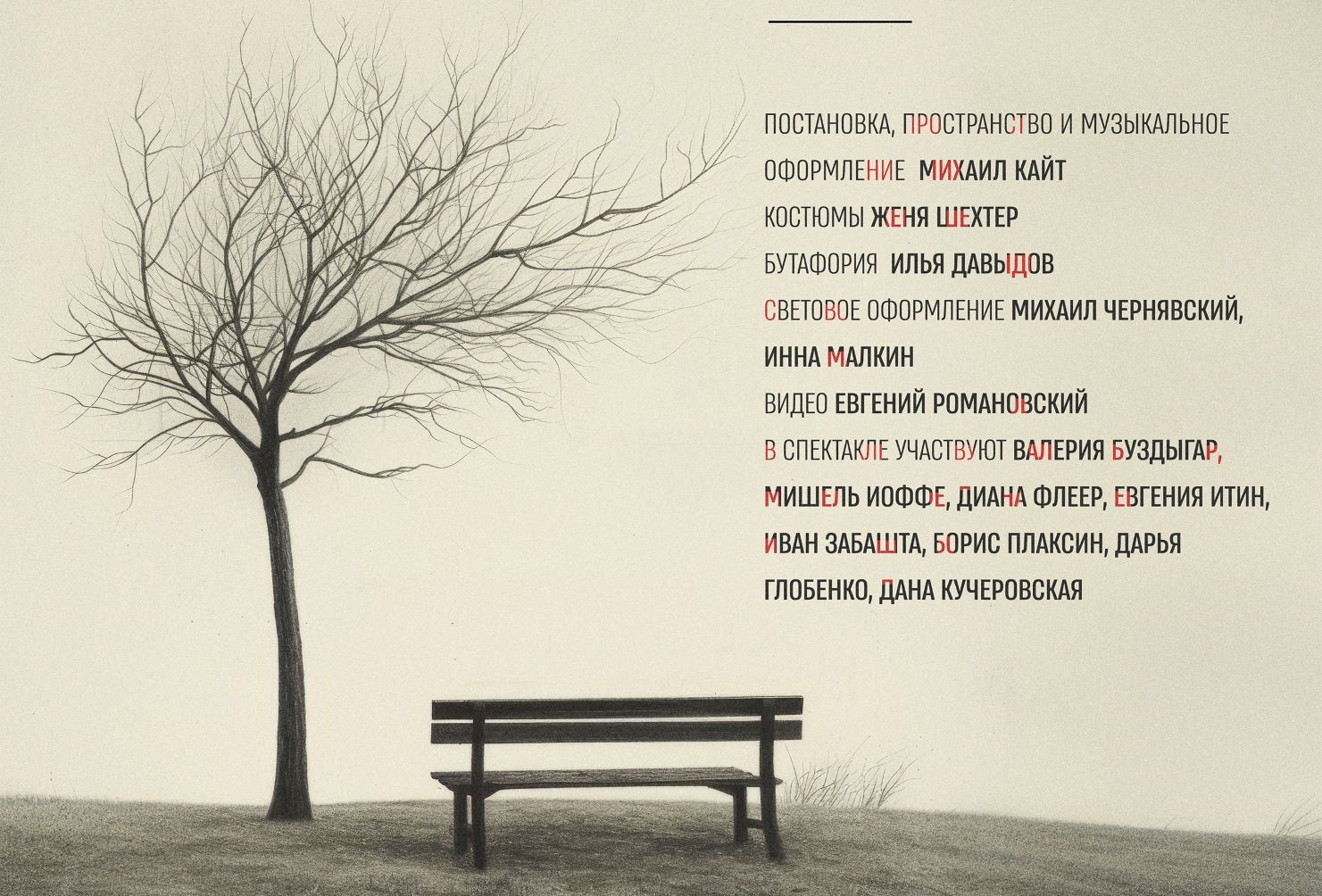«Паразиты» Пон Чжун Хо
Нечто столь же прекрасное, что и «Магазинные воришки», только с бо́льшим драйвом. Начинаешь совершенно иначе воспринимать философию бытия (не азиаты мы...) и улавливать запах бедности.
«Паразиты» – первый южнокорейский фильм, удостоенный «Золотой пальмовой ветви» Каннского фестиваля. Снял шедевр Пон Чжун Хо, в привычном для себя мультижанре, а именно в жанре «пончжунхо». Как всегда, цепляет.
«Синонимы» Надава Лапида
По словам режиссера, почти всё, что происходит в фильме с Йоавом, в том или ином виде случилось с ним самим, когда он после армии приехал в Париж. У Йоава (чей тезка, библейский Йоав был главнокомандующим царя Давида, взявшим Иерусалим) – посттравма и иллюзии, замешанные на мифе о герое Гекторе, защитнике Трои. Видно, таковым он себя и воображает, когда устраивается работать охранником в израильское посольство и когда учит французский в OFII. Но ведь научиться говорить на языке великих философов еще не значит расстаться с собственной идентичностью и стать французом. Сначала надо взять другую крепость – самого себя.
«Frantz» Франсуа Озона
В этой картине сходятся черное и белое (хотя невзначай, того и гляди, вдруг проглянет цветное исподнее), витальное и мортальное, французское и немецкое. Персонажи переходят с одного языка на другой и обратно, зрят природу в цвете от избытка чувств, мерещат невесть откуда воскресших юношей, играющих на скрипке, и вообще чувствуют себя неуютно на этом черно-белом свете. Французы ненавидят немцев, а немцы французов, ибо действие происходит аккурат после Первой мировой. Разрушенный войной комфортный мир сместил систему тоник и доминант, и Франсуа Озон поочередно запускает в наши (д)уши распеваемую народным хором «Марсельезу» и исполняемую оркестром Парижской оперы «Шехерезаду» Римского-Корсакова. На территории мучительного диссонанса, сдобренного не находящим разрешения тристан-аккордом, и обретаются герои фильма. Оттого распутать немецко-французскую головоломку зрителю удается далеко не сразу.
«Патерсон» Джима Джармуша
В этом фильме всё двоится: стихотворец Патерсон и городишко Патерсон, bus driver и Адам Драйвер, волоокая иранка Лаура и одноименная муза Петрарки, японец Ясудзиро Одзу и японец Масатоси Нагасэ, черно-белые интерьеры и черно-белые капкейки, близнецы и поэты. Да, здесь все немножко поэты, и в этом как раз нет ничего странного. Потому что Джармуш и сам поэт, и фильмы свои он складывает как стихи. Звуковые картины, настоянные на медитации, на многочисленных повторах, на вроде бы рутине, а в действительности – на нарочитой простоте мироздания. Ибо любой поэт, даже если он не поэт, может начать всё с чистого листа.
«Ужасных родителей» Жана Кокто
Необычный для нашего пейзажа режиссер Гади Ролл поставил в Беэр-Шевском театре спектакль о французах, которые говорят быстро, а живут смутно. Проблемы – вечные, старые, как мир: муж охладел к жене, давно и безвозвратно, а она не намерена делить сына с какой-то женщиной, и оттого кончает с собой. Жан Кокто, драматург, поэт, эстет, экспериментатор, был знаком с похожей ситуацией: мать его возлюбленного Жана Маре была столь же эгоистичной.
Сценограф Кинерет Киш нашла правильный и стильный образ спектакля – что-то среднее между офисом, складом, гостиницей, вокзалом; место нигде. Амир Криеф и Шири Голан, уникальный актерский дуэт, уже много раз создававший настроение причастности и глубины в разном материале, достойно отыгрывает смятенный трагифарс. Жан Кокто – в Беэр-Шеве. Новые сказки для взрослых
Хоть и пичкали нас в детстве недетскими и отнюдь не невинными сказками Шарля Перро и братьев Гримм, знать не знали и ведать не ведали мы, кто все это сотворил. А началось все со «Сказки сказок» - пентамерона неаполитанского поэта, писателя, солдата и госчиновника Джамбаттисты Базиле. Именно в этом сборнике впервые появились прототипы будущих хрестоматийных сказочных героев, и именно по этим сюжетам-самородкам снял свои «Страшные сказки» итальянский режиссер Маттео Гарроне. Правда, под сюжетной подкладкой ощутимо просматриваются Юнг с Грофом и Фрезером, зато цепляет. Из актеров, коих Гарроне удалось подбить на эту авантюру, отметим Сальму Хайек в роли бездетной королевы и Венсана Касселя в роли короля, влюбившегося в голос старушки-затворницы. Из страннейших типов, чьи портреты украсили бы любую галерею гротеска, - короля-самодура (Тоби Джонс), который вырастил блоху до размеров кабана под кроватью в собственной спальне. Отметим также невероятно красивые с пластической точки зрения кадры: оператором выступил поляк Питер Сушицки, явно черпавший вдохновение в иллюстрациях старинных сказок Эдмунда Дюлака и Гюстава Доре.
Kutiman Mix the City
Kutiman Mix the City – обалденный интерактивный проект, выросший из звуков города-без-перерыва. Основан он на понимании того, что у каждого города есть свой собственный звук. Израильский музыкант планетарного масштаба Офир Кутель, выступающий под псевдонимом Kutiman, король ютьюбовой толпы, предоставляет всем шанс создать собственный ремикс из звуков Тель-Авива – на вашей собственной клавиатуре. Смикшировать вибрации города-без-перерыва на интерактивной видеоплатформе можно простым нажатием пальца (главное, конечно, попасть в такт). Приступайте.
Видеоархив событий конкурса Рубинштейна
Все события XIV Международного конкурса пианистов имени Артура Рубинштейна - в нашем видеоархиве! Запись выступлений участников в реситалях, запись выступлений финалистов с камерными составами и с двумя оркестрами - здесь. Альбом песен Ханоха Левина
Люди на редкость талантливые и среди коллег по шоу-бизнесу явно выделяющиеся - Шломи Шабан и Каролина - объединились в тандем. И записали альбом песен на стихи Ханоха Левина « На побегушках у жизни». Любопытно, что язвительные левиновские тексты вдруг зазвучали нежно и трогательно. Грустинка с прищуром, впрочем, сохранилась.
«Год, прожитый по‑библейски» Эя Джея Джейкобса
...где автор на один год изменил свою жизнь: прожил его согласно всем законам Книги книг.
«Подозрительные пассажиры твоих ночных поездов» Ёко Тавада
Жизнь – это долгое путешествие в вагоне на нижней полке.
Скрюченному человеку трудно держать равновесие. Но это тебя уже не беспокоит. Нельзя сказать, что тебе не нравится застывать в какой-нибудь позе. Но то, что происходит потом… Вот Кузнец выковал твою позу. Теперь ты должна сохранять равновесие в этом неустойчивом положении, а он всматривается в тебя, словно посетитель музея в греческую скульптуру. Потом он начинает исправлять положение твоих ног. Это похоже на внезапный пинок. Он пристает со своими замечаниями, а твое тело уже привыкло к своему прежнему положению. Есть такие части тела, которые вскипают от возмущения, если к ним грубо прикоснуться. «Комедию д'искусства» Кристофера Мура
На сей раз муза-матерщинница Кристофера Мура подсела на импрессионистскую тему. В июле 1890 года Винсент Ван Гог отправился в кукурузное поле и выстрелил себе в сердце. Вот тебе и joie de vivre. А все потому, что незадолго до этого стал до жути бояться одного из оттенков синего. Дабы установить причины сказанного, пекарь-художник Люсьен Леззард и бонвиван Тулуз-Лотрек совершают одиссею по богемному миру Парижа на излете XIX столетия.
В романе «Sacré Bleu. Комедия д'искусства» привычное шутовство автора вкупе с псевдодокументальностью изящно растворяется в Священной Сини, подгоняемое собственным муровским напутствием: «Я знаю, что вы сейчас думаете: «Ну, спасибо тебе огромное, Крис, теперь ты всем испортил еще и живопись». «Пфитц» Эндрю Крами
Шотландец Эндрю Крами начертал на бумаге план столицы воображариума, величайшего града просвещения, лихо доказав, что написанное существует даже при отсутствии реального автора. Ибо «язык есть изощреннейшая из иллюзий, разговор - самая обманчивая форма поведения… а сами мы - измышления, мимолетная мысль в некоем мозгу, жест, вряд ли достойный толкования». Получилась сюрреалистическая притча-лабиринт о несуществующих городах - точнее, существующих лишь на бумаге; об их несуществующих жителях с несуществующими мыслями; о несуществующем безумном писателе с псевдобиографией и его существующих романах; о несуществующих графах, слугах и видимости общения; о великом князе, всё это придумавшем (его, естественно, тоже не существует). Рекомендуется любителям медитативного погружения в небыть.
«Тинтина и тайну литературы» Тома Маккарти
Что такое литературный вымысел и как функционирует сегодня искусство, окруженное прочной медийной сетью? Сей непростой предмет исследует эссе британского писателя-интеллектуала о неунывающем репортере с хохолком. Появился он, если помните, аж в 1929-м - стараниями бельгийского художника Эрже. Неповторимый флёр достоверности вокруг вымысла сделал цикл комиксов «Приключения Тинтина» культовым, а его герой получил прописку в новейшей истории. Так, значит, это литература? Вроде бы да, но ничего нельзя знать доподлинно.
«Неполную, но окончательную историю...» Стивена Фрая
«Неполная, но окончательная история классической музыки» записного британского комика - чтиво, побуждающее мгновенно испустить ноту: совершенную или несовершенную, голосом или на клавишах/струнах - не суть. А затем удариться в запой - книжный запой, вестимо, и испить эту чашу до дна. Перейти вместе с автором от нотного стана к женскому, познать, отчего «Мрачный Соломон сиротливо растит флоксы», а правая рука Рахманинова напоминает динозавра, и прочая. Всё это крайне занятно, так что... почему бы и нет?
Тайские роти
Истинно райское лакомство - тайские блинчики из слоеного теста с начинкой из банана. Обжаривается блинчик с обеих сторон до золотистости и помещается в теплые кокосовые сливки или в заварной крем (можно использовать крем из сгущенного молока). Подается с пылу, с жару, украшенный сверху ледяным кокосовым сорбе - да подается не абы где, а в сиамском ресторане «Тигровая лилия» (Tiger Lilly) в тель-авивской Сароне. Шомлойскую галушку
Легендарная шомлойская галушка (somlói galuska) - винтажный ромовый десерт, придуманный, по легенде, простым официантом. Отведать ее можно практически в любом ресторане Будапешта - если повезет. Вопреки обманчиво простому названию, сей кондитерский изыск являет собой нечто крайне сложносочиненное: бисквит темный, бисквит светлый, сливки взбитые, цедра лимонная, цедра апельсиновая, крем заварной (патисьер с ванилью, ммм), шоколад, ягоды, орехи, ром... Что ни слой - то скрытый смысл. Прощай, талия.
Бисквитную пасту Lotus с карамелью
Классическое бельгийское лакомство из невероятного печенья - эталона всех печений в мире. Деликатес со вкусом карамели нужно есть медленно, миниатюрной ложечкой - ибо паста так и тает во рту. Остановиться попросту невозможно. Невзирая на калории.
Шоколад с васаби
Изысканный тандем - горький шоколад и зеленая японская приправа - кому-то может показаться сочетанием несочетаемого. Однако распробовавшие это лакомство считают иначе. Вердикт: правильный десерт для тех, кто любит погорячее. А также для тех, кто недавно перечитывал книгу Джоанн Харрис и пересматривал фильм Жерара Кравчика.
Торт «Саркози»
Как и Париж, десерт имени французского экс-президента явно стоит мессы. Оттого и подают его в ресторане Messa на богемной тель-авивской улице ха-Арбаа. Горько-шоколадное безумие (шоколад, заметим, нескольких сортов - и все отменные) заставляет поверить в то, что Саркози вернется. Не иначе.
|
 |
Trait pour trait: Portrait of the Museum
| 30.08.2017 |
The word portrait, common in numerous languages, comes from the Old French portret, a noun use of the past participle of portraire, which means “to paint, depict,” and is derived from the phrase trait pour trait – that is, portraiture line for line, feature for feature. The current group of exhibitions at the Herzliya Museum of Contemporary Art seek to portray the museum itself through shows whose language is comprised of diverse kinds of reproduction and replication. The exhibitions on view explore the museal institution from diverse points of view, and elements of the museum’s display system are the objects they portray and question. The exhibitions maintain a complex relationship to the museum. It serves both as the depicted object and as the “screen” on which the museum’s image is to be portrayed, feature for feature, trait pour trait. The exhibitions present challenging, charged questions about the ways by which the museum is established as an institution, as well as about that institution’s order and its significance.
Hadas Ophrat: La Rotonda and I – Remix

Hadas Ophrat presents at the Herzliya Museum of Contemporary Art’s large gallery a multidisciplinary art project based on his research into the Villa Capra – known as “La Rotonda” – outside Vicenza, Italy, designed by the Italian architect Andrea Palladio in the second half of the sixteenth century, and a multitude of the villa’s imitations around the world. The museum gallery serves as a large stage on which the stage-like structure is presented – a reconstruction of the ground level of villa La Rotonda as an empty stage. Visitors are invited to enter it in small groups. Within the round room at the heart of this structure, a video-art screening simulates a combined view of the Villa Capra’s interiors and of the landscape surrounding it. It is, in fact, a meta-landscape that, combining interior and exterior views and echoing the multiple reflections in the reiterated reproduction of the original building and its projecting porticos, presents the viewer with fragmented and overlapping sequences of space and time. Visitors are invited to sit and watch documentary films and interviews conducted by the artist with people who live or work in these buildings, an inquiry into the circumstances in which reproductions of the building were built; into the boundaries between the private and public spheres; into daily activities in the house; and into its maintenance and preservation efforts.
Assaf Evron: 54 Basel Street
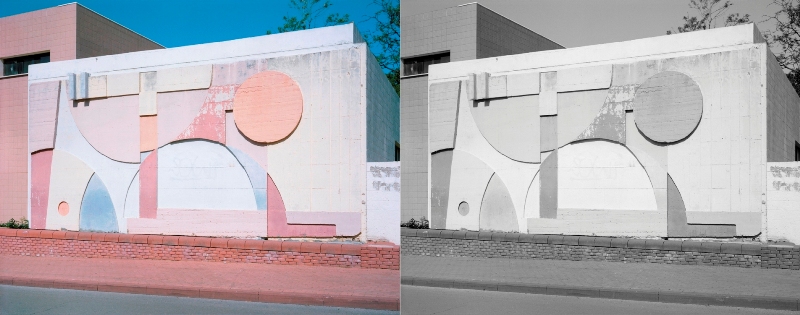
For several years now, the artistic explorations of Assaf Evron have centered on architectural ornament and decoration. At the center of the exhibition are ornamental elements taken from the Brutalist concrete building of the Herzliya Museum of Contemporary Art (designed by the architectural office Rechter-Zarhy-Peri between 1965 and 1975), and from its immediate urban vicinity. From this architectural environment, Evron has formulated a sculptural collection that is unique to Herzliya and, at the same time, captures an aesthetic look characteristic of Israeli suburban urbanism of the late 1960s and early 1970s. In these elements we gain a glimpse of a brief moment of promise in the type of Israeli architecture designed and built by contractors without an architect, when decorativeness was combined with a promise of advanced functionality and suburban convenience, while preserving a measure of modesty and unpretentious directness; a moment that has since given away to an aesthetic of “residential projects” and “prestigious towers.”
Guy Goldstein: Freigedank (Free Thinker)
Inaugural recipient of the Keshet Award for Contemporary Art
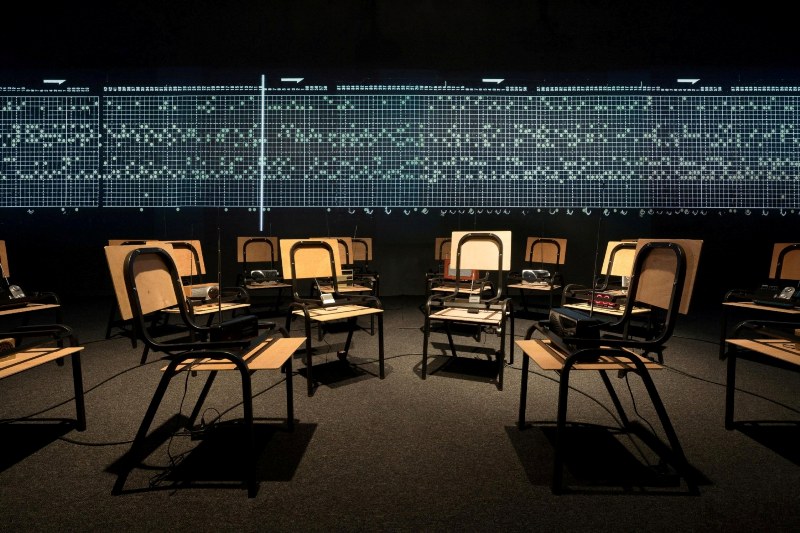
The Herzliya Museum of Contemporary Art is pleased to present an exhibition by the inaugural recipient of the Keshet Award for Contemporary Art, founded by the Bar-Gil Avidan family. The Keshet Award Foundation intends to present at the museum an exhibition by an Israeli artist every two years, over a period of ten years, to be curated by an international curator, in a bid to foster artistic dialogue. Using the musical compositions and published writings of German composer Richard Wagner as a starting point, Guy Goldstein strategically employs the prohibited – the taboo – to illuminate the relationships between government, religion, and society. Using a notorious work by Richard Wagner as a test case, he engages with it in a way that not only makes reference to the unique nature of historical European racist crimes but also cautions against any agenda-serving manipulation or censorship in art or on its behalf. While challenging in its acknowledgement of the anti-Semitic fervor that was so horrifically woven into the fabric of the Third Reich, Freigedank takes a critical look at the threat of cultural censorship and discrimination on the basis of national, socio-political, and sectarian affiliation.
The curator Louis Grachos has had an extensive career in the field of contemporary and modern art in the United States. He served as the director of the Albright-Knox Art Gallery in Buffalo, New York, and SITE Santa Fe, New Mexico. In his current position as the director of The Contemporary Austin in Texas he has spearheaded its significant development and expansion.
Dana Yoeli: Olympia
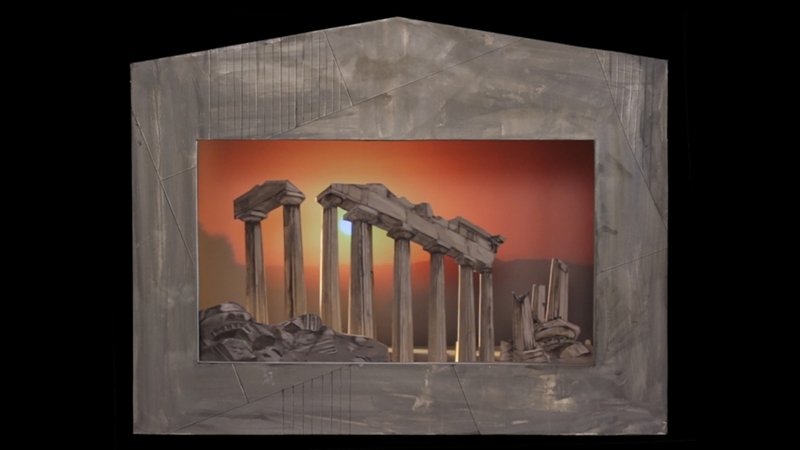
The exhibition presented by Dana Yoeli consists of a two-part video installation: a bidirectional projection, and a puppet-theater object. In this installation, she continues her examination of the aesthetics and ethics of the mechanisms of commemoration, conservation, and national memory and ethos that are encapsulated in conventional objects and ceremonies in Israel. Her engagement with this subject, which was already evident in previous sculptural installations of hers, stems from her personal experiences as the daughter of a bereaved family. But, no less importantly, it is an expression of her awareness of the collective sense of shared destiny that is ingrained in Israelis from an early age through the educational system and community institutions. Yoeli’s preoccupation with the mechanisms of commemoration and bereavement in her Olympia project transcends the autobiographical dimension, and offers a poignantly critical symbolic view of the Israeli public domain – at the national and the community level alike – that directs us to remember, to honor the fallen, to identify with the families’ loss, and to adopt the heroic narrative that is evoked through ceremony and cenotaph.
Osias Hofstätter: Two-Faced
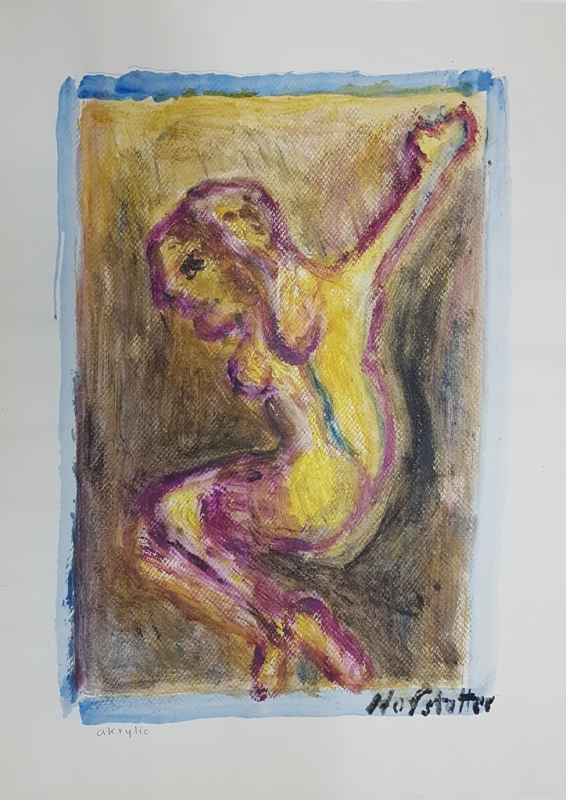
Osias Hofstätter (1905–1994, Poland), a Holocaust survivor, is known as an esteemed “Holocaust artist.” He bequeathed his estate to the permanent collection of the Herzliya Museum of Contemporary Art, at the time under Yoav Dagon’s direction, and the two set up a permanent exhibition of the artist’s works at the museum. More than two decades later, the curators Ruth Golan and Yinon Avior return to Hofstätter’s oeuvre, at the same gallery that in the 1980s used to host that display, and reinterpret it. The expressive works on view present an almost compulsive exploration of the human body and of various and curious bodily unions that are forever morphing, breaching boundaries of body and gender; encounters in which bodies penetrate one another, contain one another, or turn one another into something new. Regarding them in psychoanalytic terms, the curators claim that Hofstätter’s experiences in the Holocaust, which defied all comprehension, led him to cross all boundaries of the Symbolic, including the boundaries of the body, to create an Eros in what Lacan terms the Real. At the point of contact between the satisfaction demanded by the primal urge and the demands of reality there is jouissance – pleasure coupled with pain; a life-enabling digression that is part of the creative process or invention.
Noa Gur: Ways of Making Visible
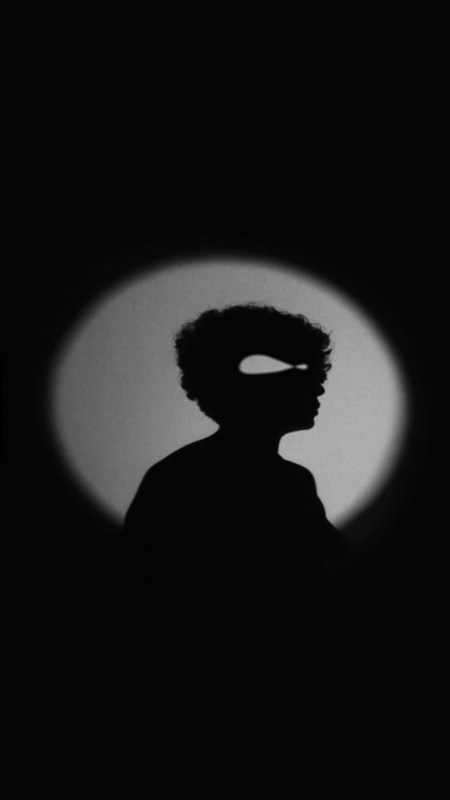
In her work Ways of Making Visible Noa Gur observes the inner workings of the museum and its hidden parts, and it is precisely there that she finds a possibility of subverting the power relations inherent in this institution. The children that appear in the work study art at the Bialik-Rogozin Elementary School in Tel Aviv, whose students include, among others, the children of refugees and labor migrants, many of whom have no permanent civic status. When she invites non-citizens to the museum and gives them the power to shine a light and animate what appears before us, Gur is subverting the performativity of the power relations and the mechanism of exhibition, as well as the gaze that these seek to preserve.
Yael Burstein: Poles
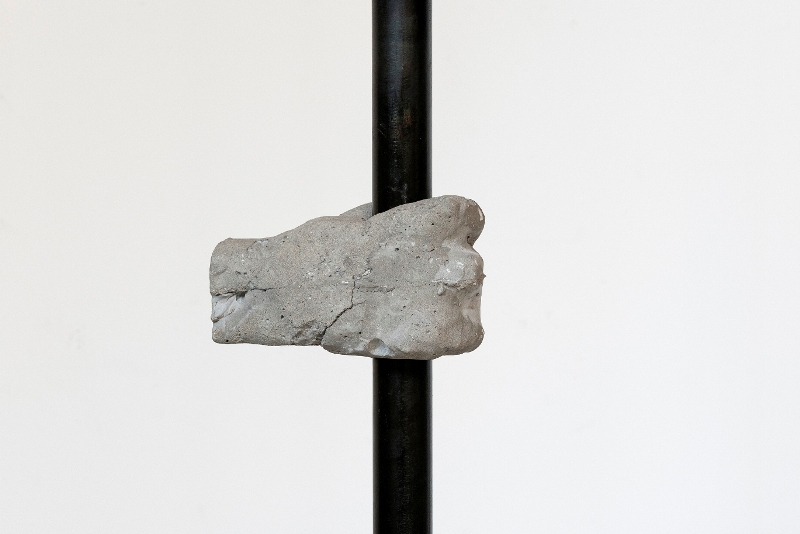
The exhibition presented by Yael Burstein is a succinct display of four vertical elements – poles – on a white stage that is placed within the “white cube” of the museum’s gallery space. The thin, metal poles are delicately worked, and their appearance makes reference to other objects. Burstein mingles together the specters of the Ancient world and those of modernism as paradigms of equivalent value. She resurrects them only to freeze them once again in an empty, white museum space as a complex poetic construction of contradictory representation systems, binding together both spirit and power with matter.
Yair Barak: Hindsight
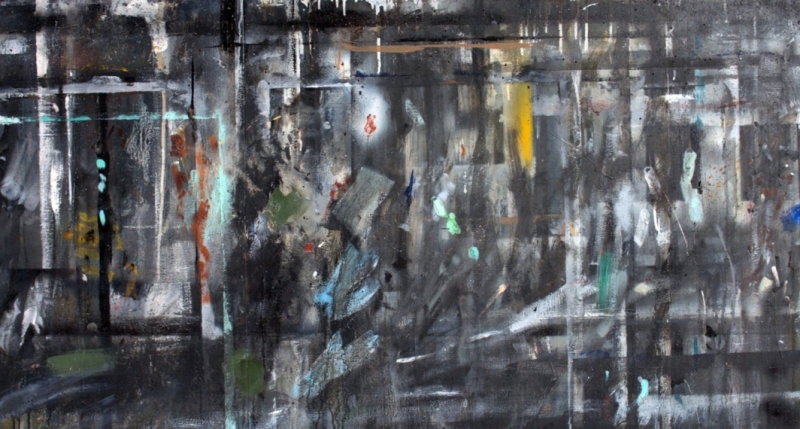
Yair Barak’s Hindsight project started with his visit to the studio of Uri Lifshitz, who died in 2011. In 2016, the Herzliya Museum of Contemporary Art marked the fifth anniversary of Lifshitz's death with an extensive retrospective of his work, thereby bringing it back into public awareness. Barak arrived at the studio of the artist, whom he had not known personally, in the aftermath of his death – in hindsight. He saw there a large plywood board made up of joined-together small boards with innumerable splotches of paint and other marks, which had served as support for Lifshitz’s works in progress, and immediately understood that he had to do something about it. The large wall of photographs displayed on the concrete wall at the entrance of the museum – Hindsight (Vertical) – seems to reproduce that wall. The photographed frames are not identical to the distribution of the conjoined wooden boards, and a close look at the photographs reveals the seams between the boards. In the Hindsight (Horizontal) video work, the archeological, medical, and forensic gazes on the same excess appear to blend together. The works explores the relationships that between painting, photography, and video; between various aspects of action; between immobility and movement In addition, Barak’s work suggests the notion of post-mortem. In this regard, the work continues Barak’s longstanding preoccupation with the passage of time and the notion of death.
Tal Slutzker: Now
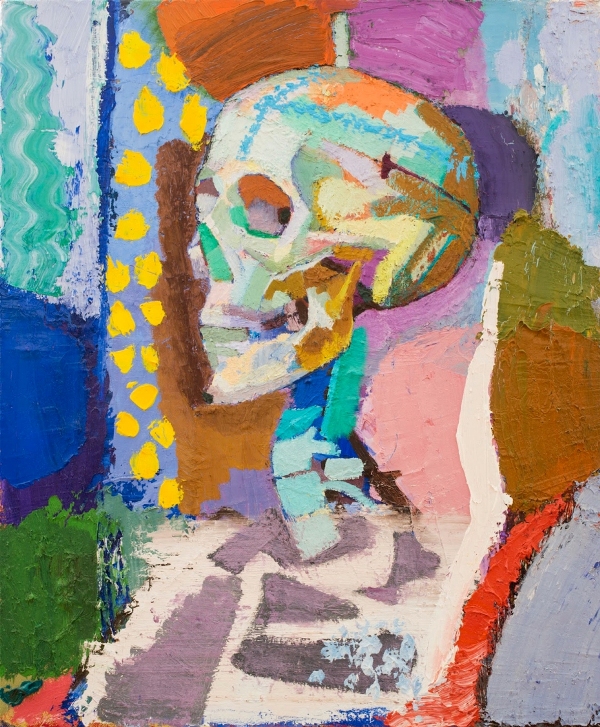
In Slutzker’s show, the line between Now and Then is drawn by the museological device of rooting the exhibition in biographical artistic contexts – whereby the museum not only serves as a platform for display, but also offers a discursive space. In his childhood, Slutzker’s family lived near the museum, so they would frequently attend its exhibitions. On one of these occasions, in 1995, inspired by an exhibition of the painter Zakhar Sherman, the young Slutzker decided to make painting his life’s vocation, and to adopt Sherman as his first art teacher. Out of extremes, he has forged an intense, frenzied, multidisciplinary artistic language of his own, combining a consummate painting ability and powerful expression. In his works, an abiding attraction to classical and expressive painting and to art history is combined with experimentation with unconventional techniques and materials
Ofri Cnaani: Useful Interventions in the Museum
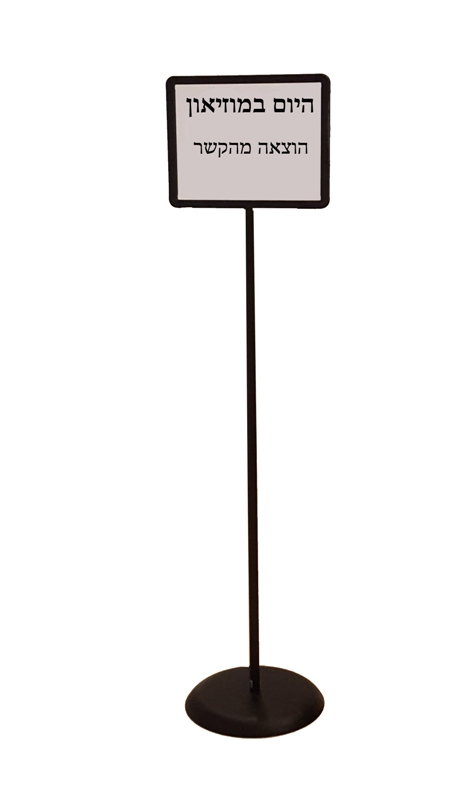
Ofri Cnaani offers two interventions in the museum for the duration of the current exhibitions. Today in the Museum engages with the notion of mediation in museum displays through a generic sign habitually used to inform visitors of events in the museum. Under the title “Today in the Museum” the artist will inscribe phrases quoted from actual exercises given to art-school students in preparation for their museum visit – open phrases that invite and suggest an inquisitive look. Another intervention by Cnaani will take the form of infiltration into the museum’s audio guide. The work If, Then, Else, a collaboration between Ofri Cnaani and May Zarhy, invites visitors to take part in a physical choreography in the museum space, thereby provoking an awareness that is out of the ordinary – of the museum, of themselves, and of other viewers around them.
Opening: September 16, 2017 at 8 pm
Closing: February 3, 2018
Herzliya Museum of Contemporary Art
4 Habanim St., Herzliya, Israel Tel. 972-9-9551011
Opening Hours: Mon, Wed, Fri, Sat, 10 am – 2 pm / Tue, Thu, 4–8 pm
herzliyamuseum.co.il |





Field 'text' doesn't have a default value Read more:
|
 |
Элишева Несис.
«Стервозное танго»

|












